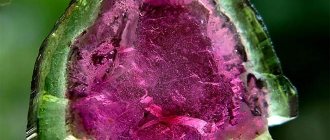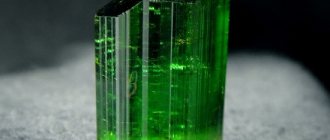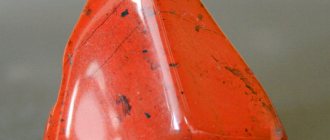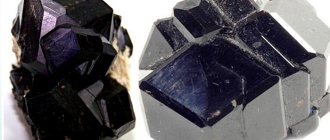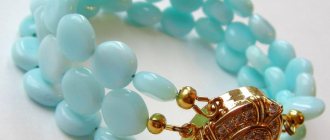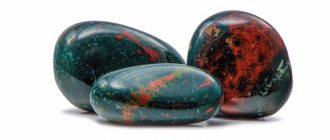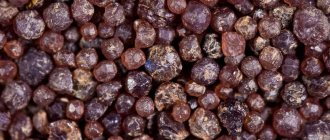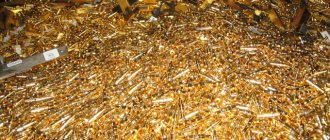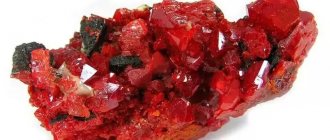Tourmaline? considered one of the most beautiful minerals created by nature. The amazing variety of colors and sufficient transparency of the crystals make this gem desirable for jewelers, collectors, and connoisseurs of natural stones and jewelry with them. In addition, tourmaline crystals have a number of proven healing properties, as well as a number of magical abilities.
Physical and chemical properties
Tourmaline belongs to the group of boron-containing aluminosilicates. The mineral is characterized by strong or distinct pleochroism and weak luminescence. Crystals exhibit pyroelectricity and piezoelectricity, meaning they become electrified when rubbed, heated, or squeezed. Interestingly, one end of the crystal receives a negative charge and the other end receives a positive charge.
| Formula | Na(Li,Al)3Al6[(OH)4|(BO3)3Si6O18] |
| Color | Varied - red, pink, green, blue, brown, yellowish, colorless, lilac, crimson, black, blue, chameleon |
| Probable impurities | Chromium, iron, manganese and others |
| Shine | Glass |
| Hardness | 7-7,5 |
| Transparency | From transparent to opaque |
| Strength | Fragile |
| Kink | Finely crusty, uneven |
| Cleavage | Unclear |
| Density | 3.02-3.26 g/cm3 |
| singonia | Trigonal |
| Refractive index | 1,616-1,552 |
Geological origin
Like other gems, tourmaline is the result of volcanic and post-volcanic processes that took place in the depths of our planet many millions of years ago.
Endogenous processes, accompanied by the phenomena of metamorphism and magmatism with the direct participation of thermal waters, occurring at elevated pressure and temperature, gave rise to this beautiful geological formation.
Most often, deposits of this mineral are directly related geologically to the occurrence of granite rocks.
According to its chemical composition, it belongs to aluminosilicates containing boron.
The formula has many variations, so it is generally accepted that the tourmaline crystal is a complex borosilicate with a variable composition.
We also recommend reading:
The history and curse of the Kohinoor stone The marvelous ametrine stone Characteristics of larimar and its main properties Selection of stones by date of birth
Like other gems, tourmaline is the result of volcanic and post-volcanic processes that took place in the depths of our planet many millions of years ago.
This mineral is special because of its polychrome. One crystal can simultaneously have several colors or shades.
The pyroelectric properties of tourmaline stone are unique: when heated, increased pressure or friction, its crystals become electrified, with one edge receiving a positive charge and the opposite edge receiving a negative charge. These stones were the first to clearly demonstrate the polarization of light.
Colors and varieties
There are many varieties of tourmaline. They are distinguished by color, place of extraction, properties and other criteria.
Paraiba
Stunningly beautiful tourmaline in blue, emerald green and crimson colors. It is mined in the state of the same name in Brazil. The stone is valued for its transparency, quality and rich color, and therefore has a high price.
Paraiba Tourmaline
Watermelon tourmaline
It got its name for its visual resemblance to a watermelon slice - the edges are green, the middle is red interspersed with white and black.
Watermelon tourmaline
Sherl – black tourmaline
The black color of the mineral comes from a large amount of iron impurities. This variety is not valued too highly and is rarely used for insertion into jewelry, but it is very popular among all kinds of mystics.
Sherl – black tourmaline
Rubellite – red-pink tourmaline
Rubellites include specimens of all shades of red - from light pink to raspberry and cherry. The highest quality stones are rich scarlet and burgundy in color and are very similar to rubies.
Rubellite – red-pink tourmaline
Chameleonite
An interesting variety that changes color in different lighting conditions. For example, under the sun's rays the stone appears green, but under electric lamps it appears red. This feature causes a rather high cost.
Tourmaline chameleonite
Indigolite – blue tourmaline
All specimens of blue color are considered to be of this variety; dark blue stones are considered especially valuable.
Indigolite – blue tourmaline
Verdelite - dark green tourmaline
This variety has a dark green color.
Verdelite - dark green tourmaline
Chrome tourmaline (green)
Due to the high content of chromium in the composition, the stones have a rich green color, often similar to emeralds, for which they are especially revered by jewelers.
Chrome tourmaline
Achroite - colorless tourmaline
A transparent gem, which is also called “elboite” due to the fact that it was most often found on the Elbe River in Germany.
Tourmaline achroite colorless
Dravite – brown-yellow tourmaline
This variety includes brown, yellowish and golden specimens.
Brown-yellow tourmaline – Dravite
Burmese (scratched) tourmaline
This variety ranges in color from garnet to dark purple. Its peculiarity is its internal structure. On the outside, the surface of the stone is perfectly smooth, but on the inside, stripes are visible, as if the stone was scratched.
Burmese tourmaline
Sibirit – crimson tourmaline
The Russian variation of rubellite has a crimson or reddish-violet hue.
Tourmaline Sibirit
Polychrome tourmaline
Polychrome stones include stones that combine several color zones. They are considered rare and are highly valued.
Polychrome tourmaline
Heavenly beauty of Elbaita Paraiba
Paraiba tourmaline is another stunningly beautiful variety of a large family of minerals.
Found almost by accident in the Brazilian state of the same name, it immediately broke all records for demand. The sky azure or airy turquoise color makes Paraiba tourmaline look like a ray of sunshine, enclosed in transparent facets and illuminating the surrounding space with its light. When cut into a cabochon, the Paraiba stone does not cast a shadow, so perfect are its optical characteristics.
Even with poor artificial or insufficient daylight, Paraiba tourmaline glows from the inside with neon light. This feature of the stone has no analogues among other minerals.
Paraiba tourmaline derives its heavenly blue from copper. The unusual color characteristics of the mineral from Brazilian mines make this gemstone one of the most expensive. Its cost reaches $10,000 per carat. Tourmaline jewelry with Paraiba stones, especially diamond-cut ones, is extremely exquisite and is considered one of the most desirable gifts.
Mineral deposits
Tourmaline is mined:
- In Brazil - Minas Gerais, Bahia and Paraiba (the most expensive varieties).
- In Sri Lanka.
- In Madagascar.
- In South Africa.
- In North America.
- In China.
- In Afghanistan.
- In Canada.
- In Russia - the Urals (the deposits are almost exhausted), the Kola Peninsula, Transbaikalia.
Faceted tourmalines
Prices
Tourmaline belongs to the segment of expensive minerals, but there are especially valuable specimens and varieties.
The average price of a stone per carat is $25–45, a high-quality Brazilian Paraiba crystal is up to $6 thousand, and the price of some domestic tourmalines is up to $10 thousand.
Defect-free examples are a good investment: for many years, tourmaline prices have been rising faster than diamonds, increasing by about 70 times.
How much a stone costs is influenced by its transparency: clean, flawless stones are valued more than others, while opaque stones are cheaper.
The magical properties of tourmaline
The magic of tourmaline is comprehensive support, protection from negativity and bad influence. The direction of influence depends on the color of the stone:
- Red and pink specimens are responsible for strengthening relationships, enhancing feelings, increasing libido and helping to attract the attention of the opposite sex. Lonely people need them to get rid of the burden of past disappointments, make friends, and find a soul mate. Pink tourmalines also help the fair sex become feminine, believe in themselves and stop tormenting themselves with complexes and prejudices.
- Green tourmaline is the most powerful energy protection. The stone also stimulates the development of a person’s creative abilities, and also helps to find a calling and establish himself as a person.
- The colorless mineral represents internal balance and harmony.
- Blue stone helps to establish a connection with higher powers, develop spirituality and strengthen intuition. He is also responsible for the inviolability of unions, in particular marriages.
In China and India, tourmaline is called a stone of determination and determination.
- Black tourmaline blocks negative magical effects and also protects against various kinds of troubles.
- Lilac gem helps to cope with emotions, eliminates temper and aggressiveness.
- The blue variety enhances the thirst for knowledge, improves mental abilities, helps to find the truth, draw the right conclusions, and also identify lies and insincerity.
- A brown or yellow stone strengthens the inner core, strengthens character, gives physical endurance, and also protects older people from injustice, age-related manifestations (forgetfulness, fatigue) and any troubles.
Multi-colored stones mean improving the quality of life, good luck in business, determining life direction and protection from human deceit, hatred and envy.
Medicinal properties
The healing power of tourmaline is undeniable. It is confirmed not only by lithotherapists, but also by ordinary scientists (the stone is used in heating and infrared medical devices, as well as air ionizers).
Another famous experimental scientist, the Curie spouses, studied the energy hidden in tourmaline (the stone has its own charge). They compared and found the electrical radiation of the human body and this mineral to be identical.
Polychrome tourmaline cut
If you are treating yourself with stones, you should take into account the color, since the healing nature of tourmaline depends on it:
- Green is rejuvenation, strengthening the immune system, normalizing blood circulation, and also helps in the treatment of kidneys, liver and heart.
- Blue – “order” in the nervous system, elimination of hormonal imbalances, normalization of metabolic processes and general tone of the body.
- Blue – male strength, restoration of reproductive function, elimination of headaches, improvement of vision.
- Red is vascular health and normalization of the heart, as well as the genitourinary system.
- Pink – clear skin, fresh complexion, cheerfulness and energy.
- Yellow is calm, balance, healthy sleep, good appetite, regulation of the body’s water balance.
- Black is a protector against viruses and bacteria, defeats acute infections of any nature, and is most effective against colds.
Absolutely all varieties, due to their physical properties, deliver the oxygen they need to cells, and also gradually displace free radicals. This helps restore the body and activate its resources.
Contraindications
Despite its many advantages, tourmaline is not suitable for everyone; there are contraindications. Stop factors are as follows:
- increased body temperature;
- bleeding;
- hemorrhagic strokes;
- thyroid diseases;
- pregnancy;
- breast-feeding.
The medicinal properties of tourmaline are used with caution in case of allergies or the use of a pacemaker. If soft tissues are damaged, the stone can be used for treatment no earlier than 24 hours after the injury.
The stone cleanses the home: if you place it near the TV or computer, the negative effects of radiation will decrease.
Talismans and amulets
Ring with polychrome tourmaline
Tourmaline has a wide range of uses as a talisman. They believed in its power from ancient times, even the ancient Romans, Egyptians and other peoples.
The Indians called tourmaline a male gem. According to their beliefs, the stone adds masculinity and assertiveness to the stronger sex, and also increases potency.
Blue varieties of tourmaline are necessary for clergy, as well as judges and other law enforcement officials, since the stone does not tolerate liars and hypocrites. He always strives to bring them to clean water. Priests will be able to assess the sincerity of the penitent, and judges will be able to establish the truth.
Traditionally, as it is relevant for many gems, tourmaline helps creative individuals to reveal their abilities and convey them to humanity, while receiving recognition.
The pebble is also useful for those who spend a lot of time at the computer or TV. It neutralizes harmful radiation from these devices.
Pink varieties are a feminine assistant in the fight against uncertainty, indecision and weakness of spirit. With them, women will become stronger morally, as well as more attractive and energetic.
Regarding the varieties of tourmaline, psychics and magicians give recommendations for wearing them by day of the week, explaining that on these days a stone of a certain color is most effective. On Sunday you need to wear rubellite (pink), on Saturday and Monday - verdelite (green), on Friday and Thursday - indigolite (blue), on Wednesday - scherl (black), on Tuesday - red specimens.
Blue crystals are useful for married couples, especially newlyweds, for building strong relationships and mutual trust, as well as for rekindling faded feelings.
Blue varieties help scientists and researchers by opening their eyes wider, sharpening their gaze, helping them see what is important among the trash, form a big picture and draw the right conclusions.
Astrological compatibility
There are no astrological contraindications to wearing a gem for any zodiac sign. Some astrologers are convinced that representatives of each of the elements have their own rules for contact with the stone:
- Air signs - Aquarius, Gemini and Libra - should wear the stone once every seven days, no more often. A prerequisite is a gold frame for the product.
- Representatives of Fire are Leo, Aries and Sagittarius. Red shades framed in gold suit them. To raise self-esteem and soften a difficult character, it is enough to wear a talisman twice a week - on Tuesdays and Thursdays.
- Capricorns can also wear a gem in a gold or silver frame, but not every day. Contact with the mineral will help you get out of depression, as well as get rid of bad habits.
Green and blue tourmalines are suitable for Water signs. All other Zodiacs can also wear this gem. The main thing is inconsistent contact. Tourmaline has its own difficult character, so the owner and the stone need periodic rest.
The names patronized by the gem are Sofia, Julia, Arkady, Eduard.
5 / 5 ( 1 voice )
Tourmaline products and jewelry
High-quality tourmalines are beautiful; they are inserted into a wide variety of jewelry - earrings, rings, brooches, necklaces, bracelets and others. Previously, when people were not yet able to reliably determine whether a mineral belonged to a certain type, red, blue and green varieties were confused with rubies, sapphires and emeralds. There is evidence of this in history.
This is interesting!
The world-famous jewel in the form of a bunch of grapes, named “Caesar’s Ruby,” which, according to legend, Cleopatra gave to the great Roman commander Gaius Julius, has long been considered to be made of rubies. The decoration wandered from hand to hand for a long time; subsequently, the Swedish King Gustav VIII presented it to the Empress of Russia Catherine II. It was only in the 19th century that mineralogists determined that the “Caesar’s Ruby” was actually pink tourmaline. Now the jewel is the property of the Diamond Fund of Russia.
Earrings with green tourmaline
Today, jewelry with tourmaline and just gems can be purchased at different prices depending on the type of stone used. For example:
- A small untreated black schorl crystal can be purchased for only 5-10 dollars.
- A sample of Brazilian pink rubellite will cost $9-15.
- Brazilian brown tourmaline bracelet with steel clasp - $45-50.
- Silver earrings with blue tourmaline – $60-70.
- A treated polychrome tourmaline weighing almost five carats - about $250.
- Natural indigolite 4 carats - $150.
- Paraiba gem (5*6 mm) - about 200, and in the shape of a heart (7*6 mm) - 230-250 dollars.
- Watermelon tourmaline 31 carats – $330-350.
- Rubellite bracelet – $35-50.
- Silver set (earrings + ring) with lilac tourmaline – $136.
- Gold ring with large red Brazilian tourmaline - about 600 dollars.
In addition to jewelry purposes, tourmaline is used in medical devices, air ionizers, optical instruments, electronics, and for other medical and industrial needs.
Story
Tourmaline stones were set in gold for the rulers of Byzantium, and jewelry was created from domestic raw materials by masters of Ancient Rus'. At the beginning of the 18th century, sailors brought it from Ceylon to the then world jewelry capital - Amsterdam.
What tourmaline is is explained by the double translation of the name from the Aboriginal language:
- Attracting ash or ashes;
- Magical multi-colored stone.
Monarchs gave them to each other, for example, the Swedish king to the Russian Empress Catherine II. A stone weighing 500 carats, or 100 grams, adorned Anna Ioannovna’s diadem.
How to distinguish an original from a fake
Polychrome tourmaline crystal, height 2 cm
Artificial tourmalines exist, that is, those that are grown in the laboratory. Only they have pale, unexpressed colors and almost no shine, which is why they are used in medicine and industry. It is not advisable to use such stones as imitation of natural ones in jewelry.
However, tourmaline is still counterfeited, for which glass and plastic are used. You can distinguish a fake on the spot if you know the basic properties of the mineral:
- The ability to heat up and become electrified - if you rub a natural stone, it will heat up quite quickly and begin to attract hair, ash or cut newspaper paper.
- A natural gem is hard and cannot be scratched with a needle, but glass or plastic can be easily scratched.
- If you look at the gift of nature in the light, you will notice a heterogeneous structure and slight tints of color. The fakes will seem perfect.
- Natural tourmaline is characterized by pleochroism, that is, a soft iridescence of colors when changing the viewing angle.
Professionals say that blue and black tourmalines are the least likely to be counterfeited, but to be on the safe side, it is always better to ask the seller for a certificate for the stone.
Application area
The stone is used in industry and in the manufacture of jewelry.
Jewelry
Tourmaline is divided into precious and ornamental. Separation criteria - shade, transparency. The most valuable are pure, transparent emerald, crimson, blue and red-green samples. Transparent stones larger than 2 carats are most in demand on the jewelry market.
Jewelers use stones larger than 2 carats
Medicine
The stone is popular in medicine due to its piezoelectric properties. It is used to make health mattresses, pillows, underwear, belts and other devices useful for the musculoskeletal system.
Industry
Large crystals are used by radio designers.
Ornamental tourmaline is a material for carving and stone engraving.
Talismans and amulets
It is believed that crystals communicate danger by changing their hue. They are used to make amulets that protect the owner. They are recommended for people who are constantly at risk because of their work, as well as for those who come into contact with new people and sources of information. If the amulet darkens, it is necessary to evaluate the surroundings - there is an ill-wisher or a source of direct danger.
Tourmaline is in demand in various fields
